Like a kind of sandwich, the standard floors of the work world are positioned between two semi-public zones. They are reached vertically via the centrally located group of lifts and via two smaller internal atriums through open staircases and are also visually connected. On each floor you arrive at the respective work areas through a connecting communication zone that is excellently lit from the large atrium and the internal courtyard. Four central core areas are docked to this communication zone around which the individual “homes” of the work worlds are grouped like fingers.
LDZ Salzburg
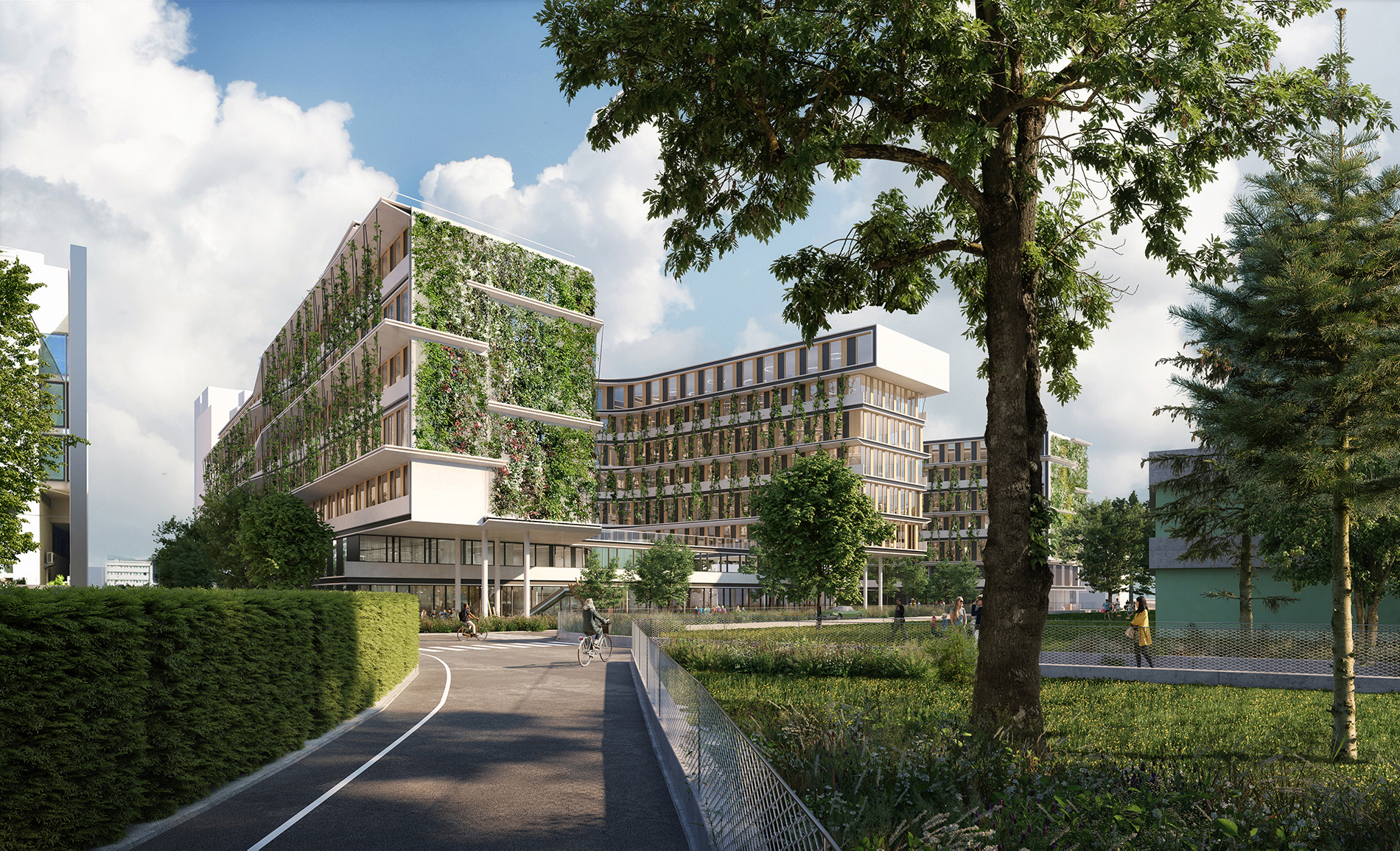

In urban planning terms the classic block perimeter was to be continued at those places where, opposite, a typology of this kind already exists with the aim of creating clearly defined street spaces.
Year
2021
Venue
Salzburg
State
Competition
Category
Mixed
Size
50.879 m²
Year |
Venue |
State |
Category |
Size |
|---|---|---|---|---|
2021 |
Salzburg |
Competition |
Mixed |
50.879 m² |
Year
2021
Venue
Salzburg
State
Competition
Category
Mixed
Size
50.879 m²
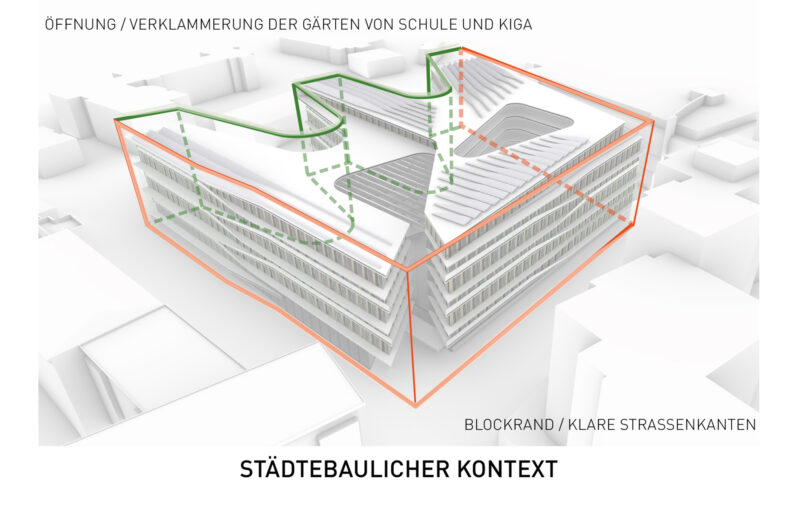
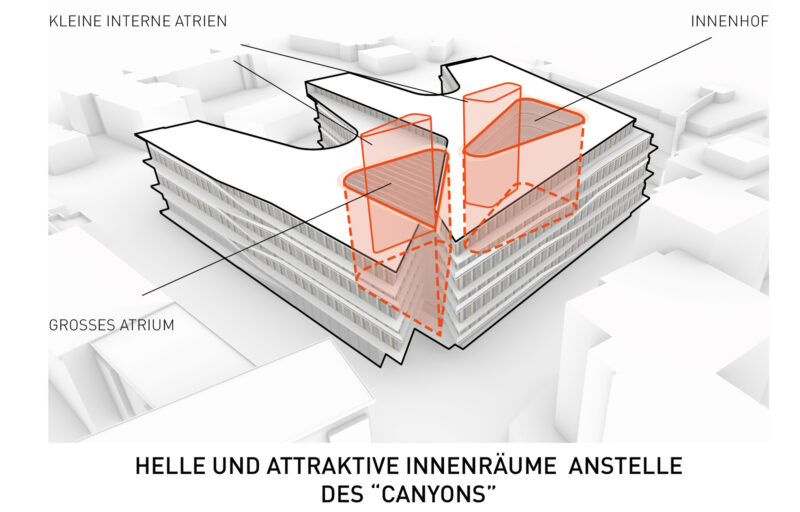
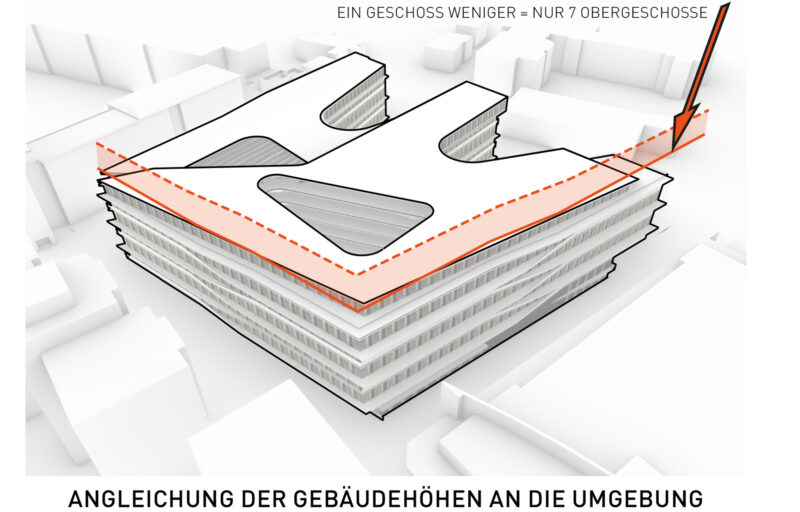
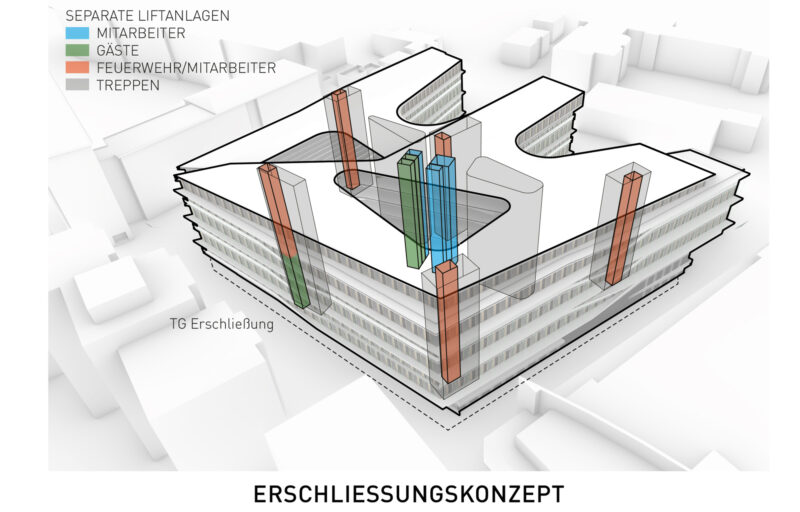
Towards the west, however, where the block perimeter structure begins to break up, the response takes the form of semi-courtyards that are open to the street in order, among other things, to ensure a suitable amount of sunlight for the school site opposite. In this calculated way it succeeds in being both part of the generic urban structure while at same time embodying an open, dynamic, and service-oriented regional administration that is modern and offers a sense of identity. The main circulation of the LDZ is along the diagonal that relates in urban planning terms to the main train station.
As the start of this circulation system visitors are received by a wider area, a kind of joint to the urban space. From here they are led through the main entrance into the large glass-roofed atrium that creates a sense of identity. The group of lifts positioned as an endpoint is clearly identifiable. Additionally, as a pendant to the atrium, on the office floors a large internal courtyard is incised in the building. This brings daylight deep inside the building and ensures easy orientation at every point.
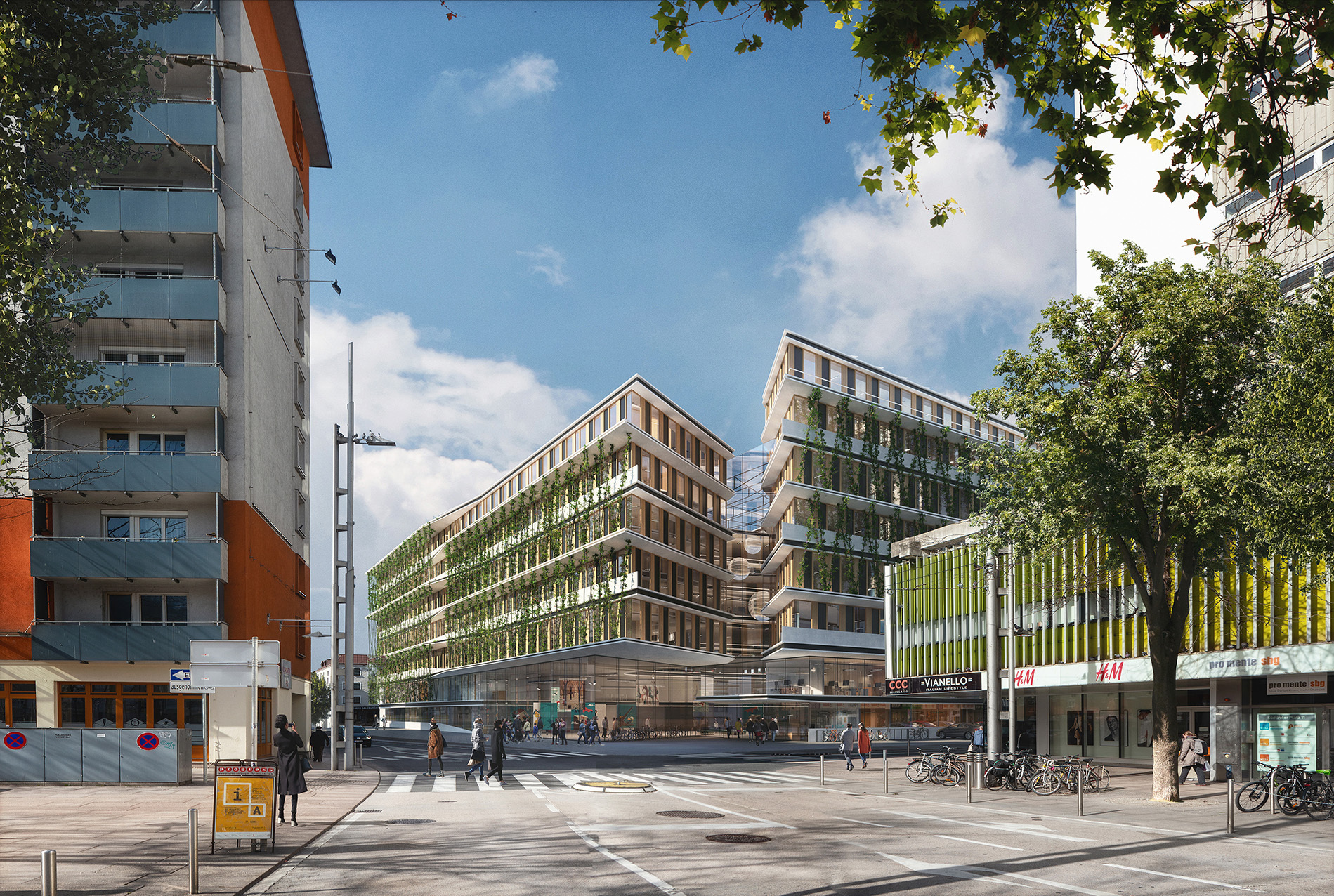
The two plinth levels should be understood as an inviting, generous, and airy structure with numerous two-storey areas which is reserved for the service and consultation zones, as well as for those functions that are directly entered from the street space. The conference and restaurant area, on the other hand, was given its own efficient circulation system and was raised to roof level so that the plinth could be made in a relaxed and generous way but also to make the magnificent views of Salzburg accessible to a larger public and, not least importantly, to allow a sculptural formation of the crowning element of the building appropriate to its identity on the main UNESCO visual axes.
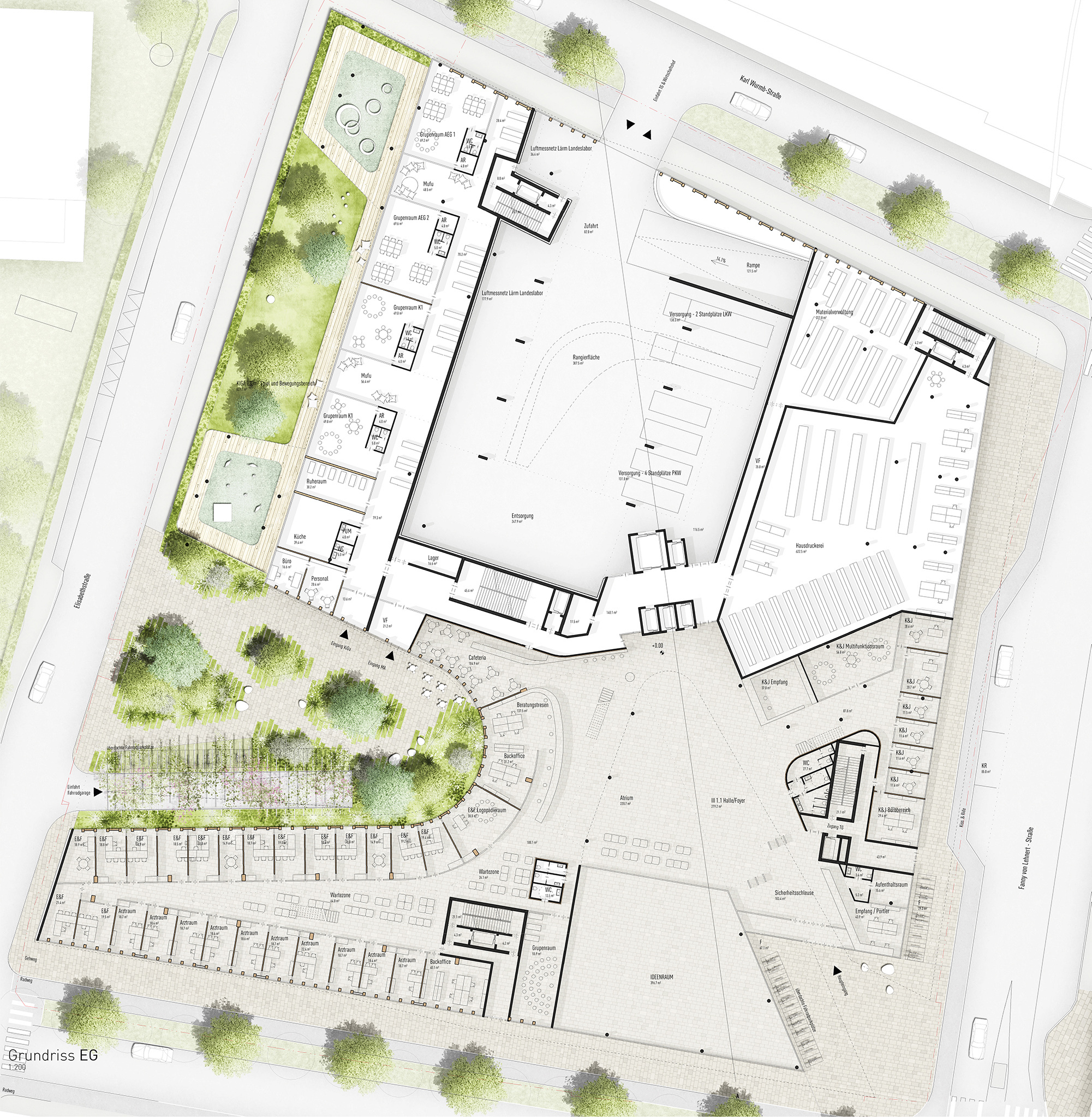
However, they are not separated from each other by the cores but – on the contrary – are connected “in a blurred way” with each other so that an organisational dynamism is possible at any time. The building’s urban layout, the way its wings recede, and the rounding of the semi-courtyards and internal courtyards form the basis of precisely this potential.
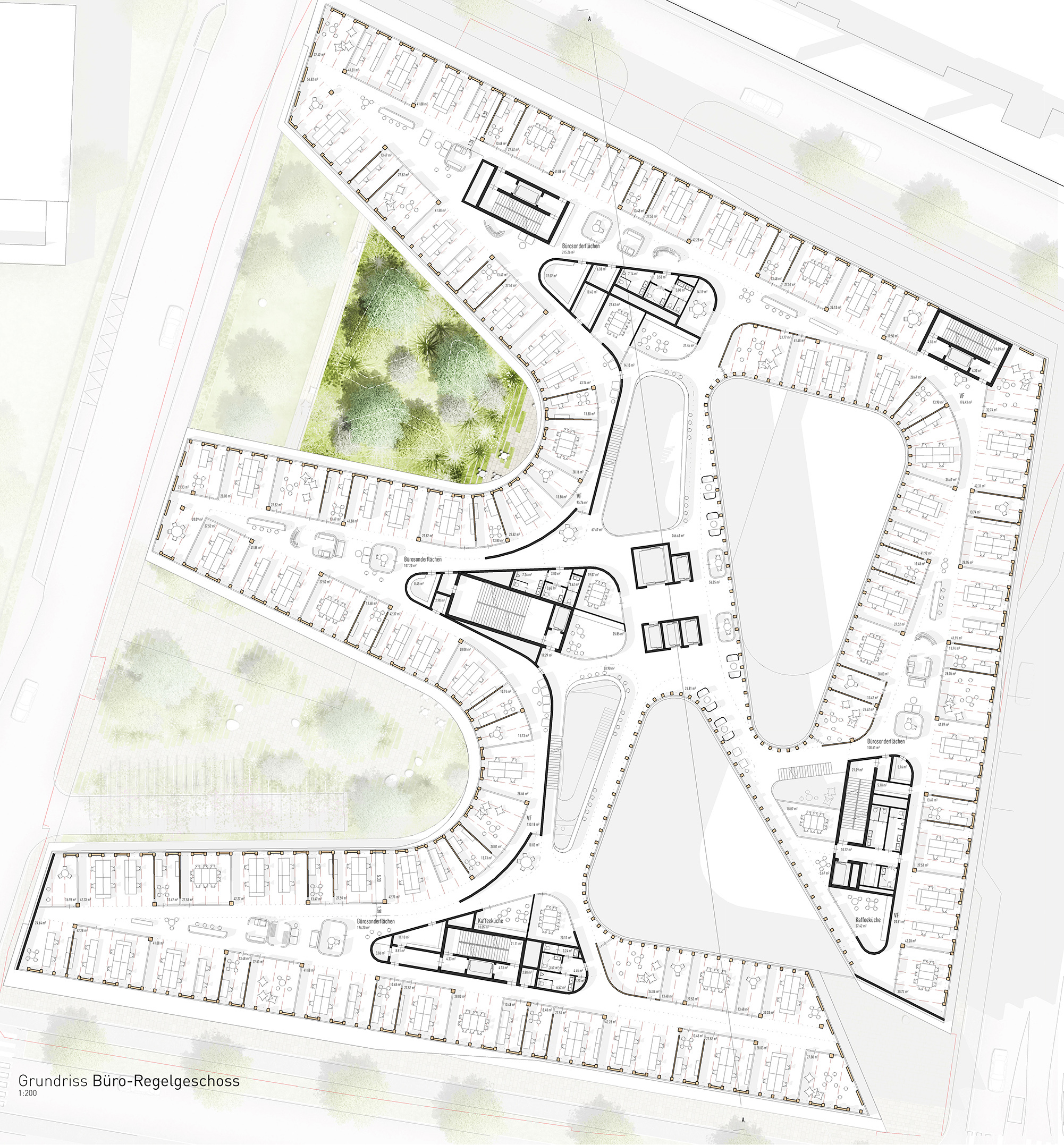
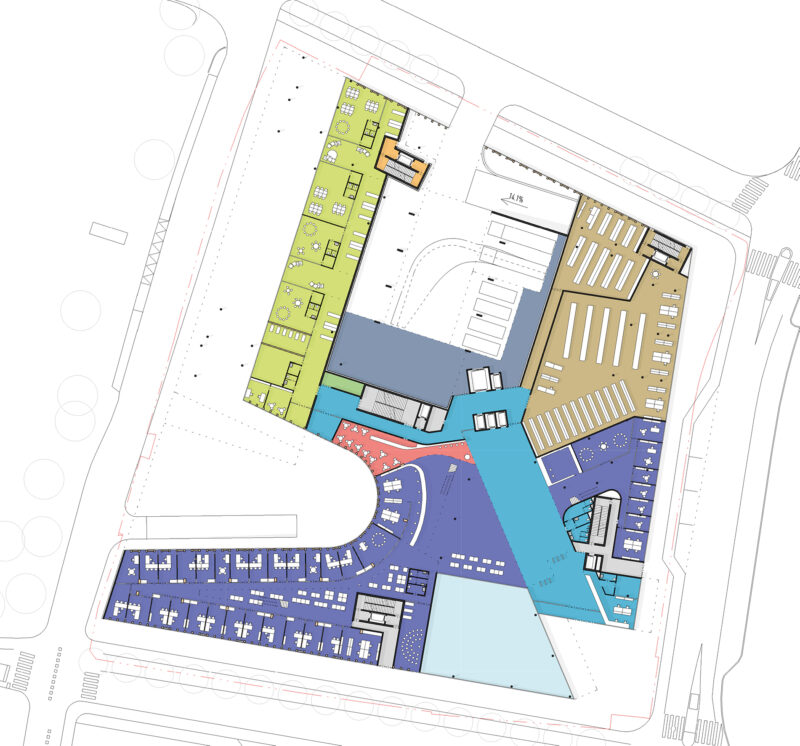
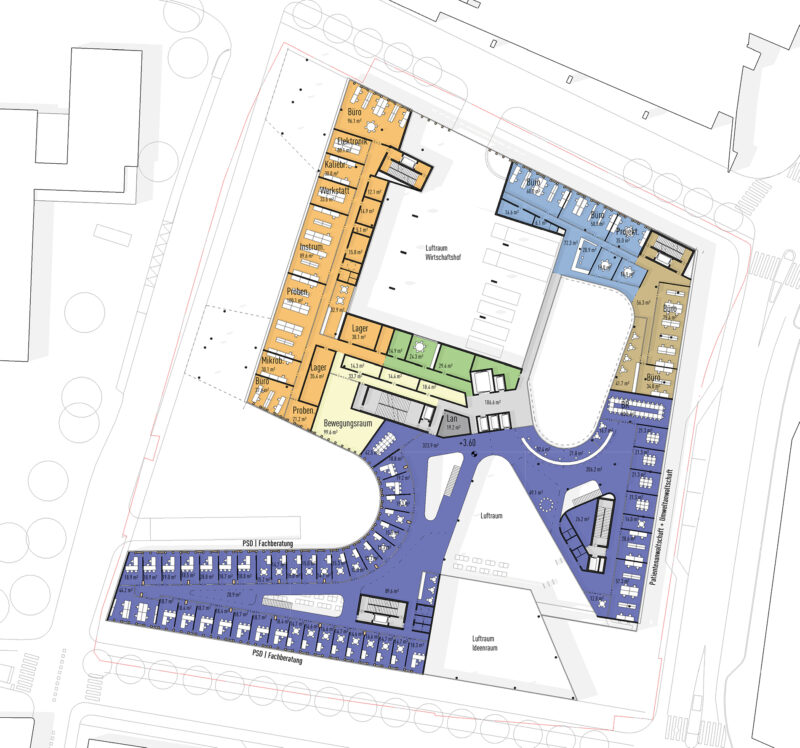
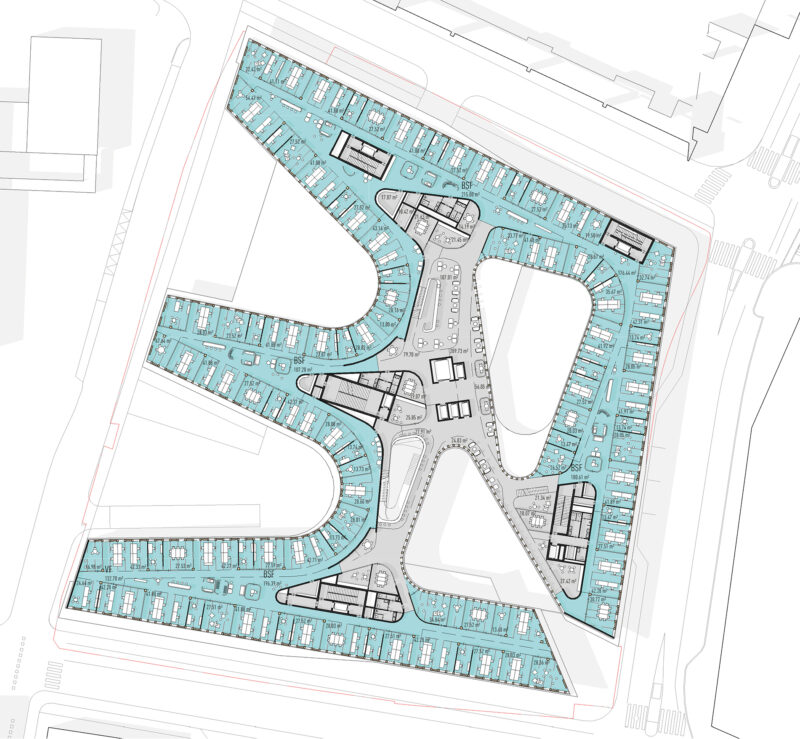
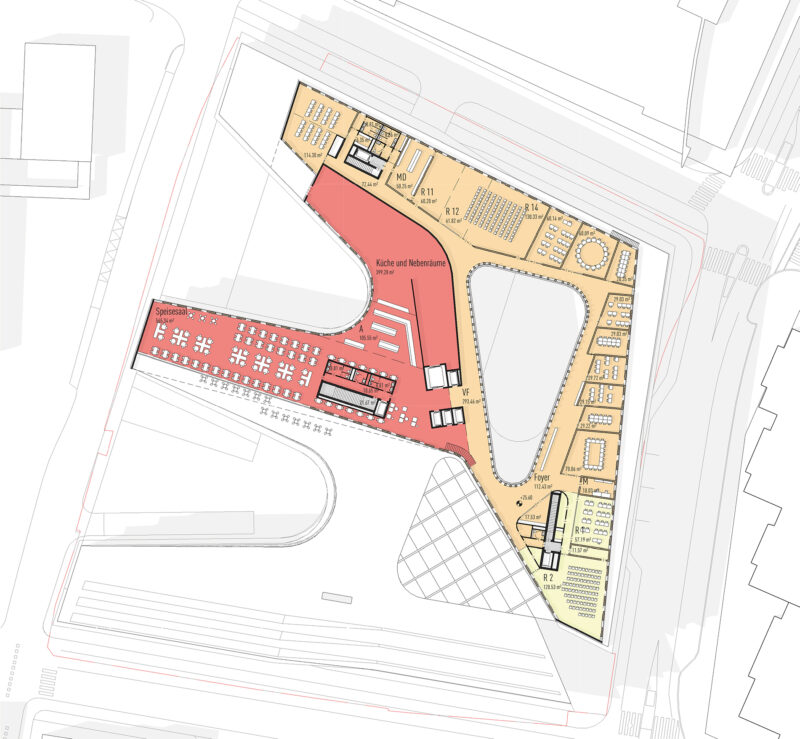

Open space concept
The open space concept responds to the adjoining urban space and produces a variety of qualities and atmospheres. The focus is on climate-resilient design and a large amount of continuous greenery. The forecourt in the south-east relates to the train station forecourt and with paving that is continued inside the building forms a generous urban entrance to the LDZ. In the west outdoor areas with a special green character are created in the form of a green square and the outdoor space for the kindergarten. Areas of shrubs and grasses combined with numerous newly planted trees are found in the other courtyards, too, providing pleasant spaces to linger and creating an agreeable micro-climate. The range of outdoor spaces is augmented by the intensive green roofscape.

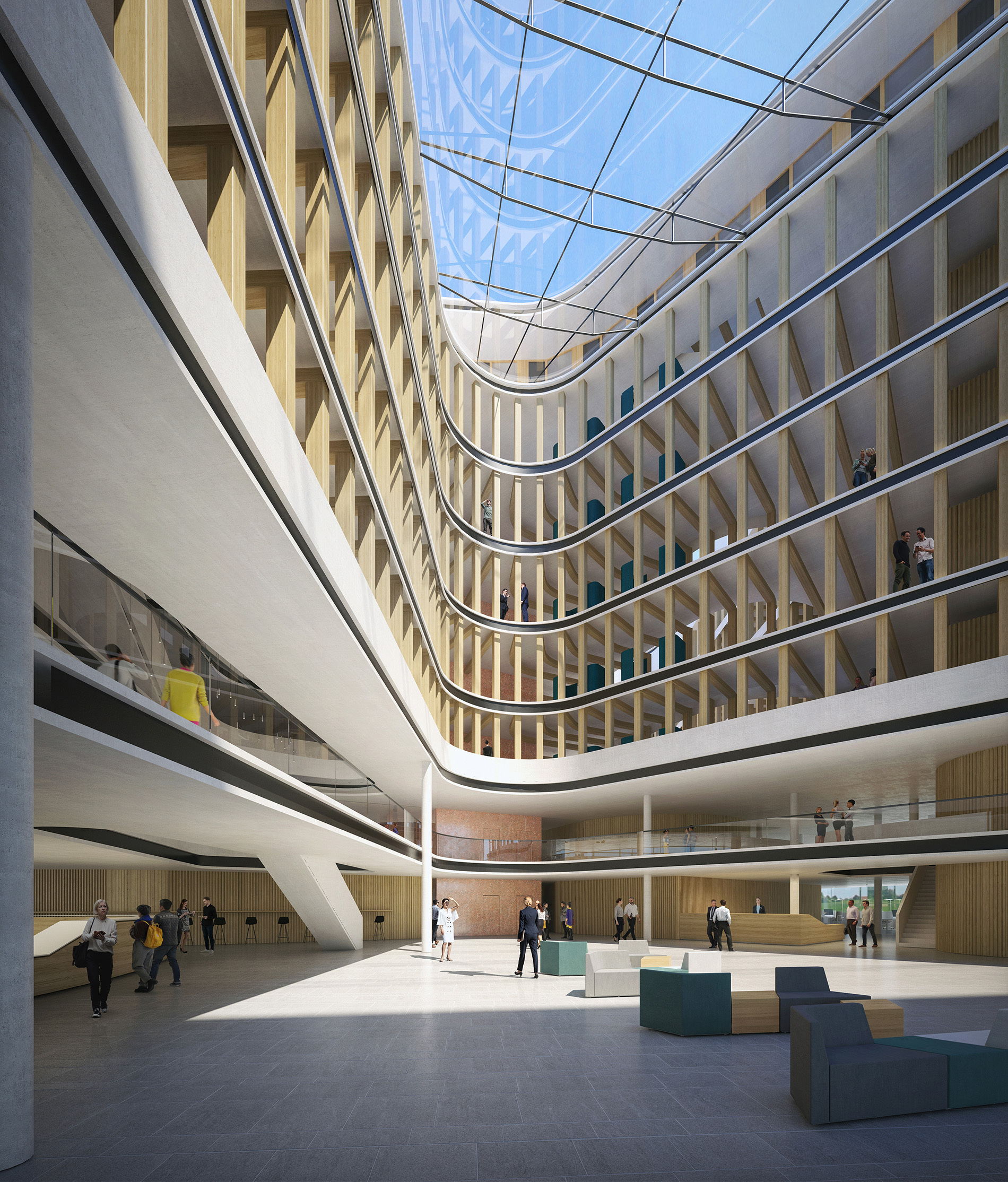
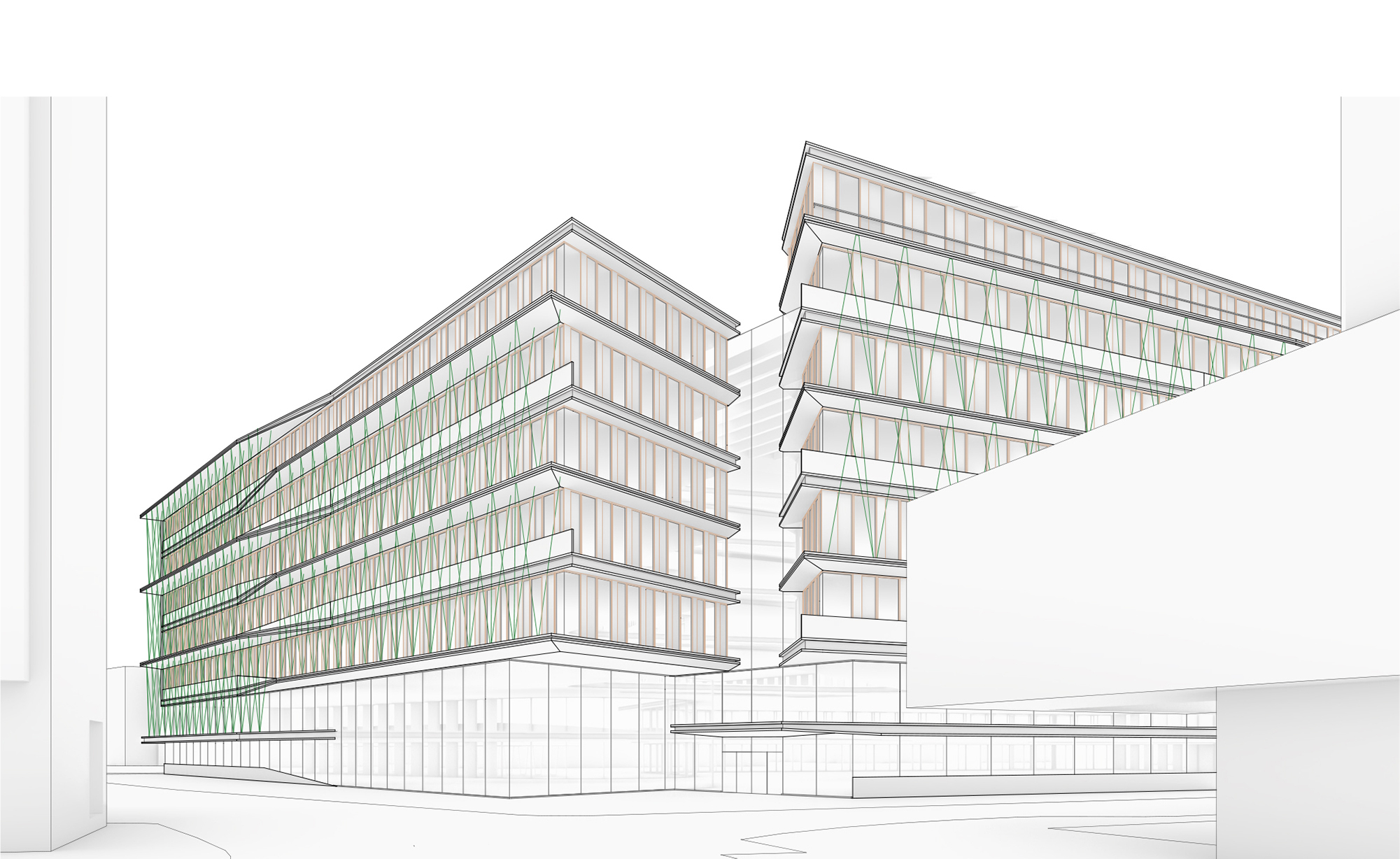


Architecture
Pichler & Traupmann Architects
Design team
Bartosz Lewandowski (Teamleader)
Anna Chakahal-Salakhova
Patrik Drechsler
Anna Gulinska
Piotr Pindor
Merve Sahin
Client
State of Salzburg
Structural design
Woschitz Engineering ZT GmbH, Vienna
Structural fire protection
Norbert Rabl ZT GmbH, Graz
Energy concept
rhm GmbH, Aspang
Energy performance certificate
RWT Plus ZT GmbH, Vienna
Klimaaktiv | Building costs
ATP sustain GmbH, Vienna
Landscape planning
Carla Lo Landschaftsplanung, Vienna
Hard facts
Start of planning: 2020
Usable floor area: 38.522 m²
Gross floor area: 50.879 m²
Cubage: 192.876 m³
Location: Salzburg
Function: Regional service centre
Scope: EU-wide open, double-stage competition
Model
Harald Schmidt, Vienna
Renderings
Patricia Bagienski, Vienna